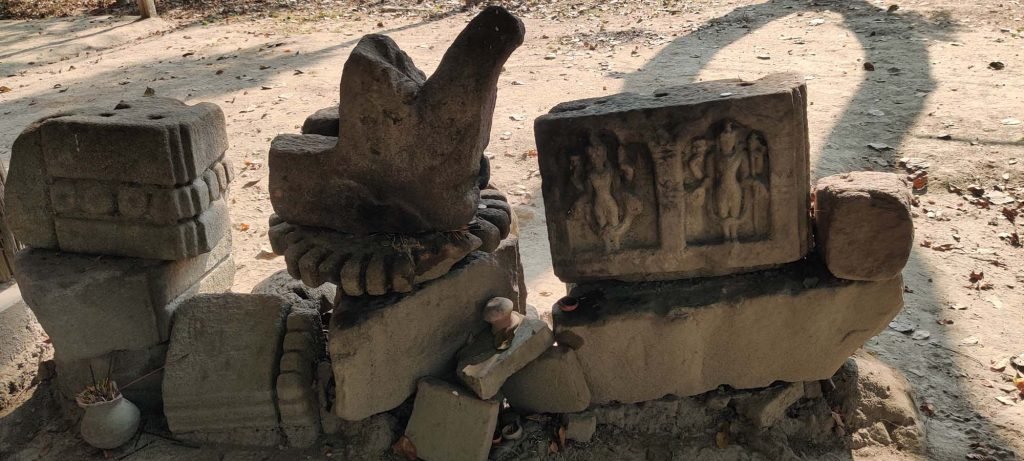The Allahabad Pillar Inscription of Samudragupta (AD 335-75) refers ‘Davaka’ and ‘Kamrupa’ as the frontier kingdoms of the Gupta empire. ‘Davaka’ is identified as ‘Davaka’ in the Nagaon District whereas ‘Kamrupa’ with Assam respectively. The place is referred as Kamrupa – Pragjyotishapura in the epics and the classical Sanskrit works of Kalika Purana and Yogini Tantra.
Ancient Kamrupa was ruled by the Varman dynasty, Salastambha dynasty and the Pala dynasty in the early historic period. Whereas, the Ahoms, Kacharis, Kochs and some other dynasties contemporary to them ruled different parts of Assam.
The Varman dynasty : The reliable sources of historical data suggest that king Pushyavarman (c.350-74CE) was the founder of the Varman dynasty. The Dubi copper plate inscription of Bhaskarvarman (c.594-650CE) refers the genealogy of the rulers of the dynasty. The Nalanda seal and Nidhanpur Copper Plate grant Bhaskarvarman also provide important information about the Varmans. The kingdom of Kamrupa came into prominence during the rule of Varmans. Bhaskarvarman was the most celebrated king of the dynasty and he was contemporary to Harshavardhan (606-48CE), king of Kanauj. During his ti,e the Chinese traveler Hieun Tsang visited ancient Pragjyotihpura, modern Guwahati, at the invitation of the former.
The Salastambhas dynasty : King Salastambha who ascended the throne of Kamarupa after the death of Bhaskarvarman founded the dynasty. The Baranga copper plate of Ratnapala, a king of later period, recorded the long line of the rulers of the Salastambha dynasty. They ruled for more than three centuries and established their capital at Harrupesvara, modern Tezpur. The famous rock inscription of king Harjaravarman (c.815-37CE) provides the date in Gupta Era 510, corresponding to 829 CE. The Tezpur copper plate inscription of Vanamala (837-55CE) claims that the king destroyed a number of hosts of kings and extended the kingdom to seashore. After the death of Vanamala his son Jayamala (855-60CE) succeeded to the throne. The last ruler of the dynasty was king Tyaga Singha (6.970-85CE)>
The Pala dynasty : After the rule of Salastambha dynasty, the palas of Assam ruled the land up to 12th century CE. Founder of this dynasty is Brahmaapala. The bargain copper plate inscription of Ratnapala throws important light on the rule of the dynasty who ruled the kingdom from the capital Durjaya. Ratnapala (920-60CE) was the most powerful king of the dynasty. He was succeeded by his grandson Indrapala (960-90CE). The Gachtal copper plate inscription throws much light on the rulers of this dynasty. The three copper plate inscription of Dharmapala (1035-60CE) provide much information about the rule. He was the most powerful king of the Pala dynasty. The rule of the line of Brahmapala ended with the king Jayapala (1075-1100CE).
Information courtesy: Archaeological Survey of India, Guwahati Circle
